
Guess how many blog posts people publish each day.
Any ideas?
Well, WordPress users alone publish over 2 million posts every day. That comes out to 24 blog posts every second.
That means that users published around 216 blog posts while you were reading these five sentences.
And that’s only counting WordPress users. If we were to count all blog posts, that number would surely be higher.
This makes it kind of tough to stand out. But you have to if you want to make your blog a successful one.
While I often spend 4-5 hours writing my blog posts, the ten minutes I spend optimizing each post are easily the most important.
No wonder millions of people Google the term “SEO” each month.
On any given day, people conduct more than 2.2 million searches. And that’s just on Google — to say nothing of the other search engines.
Therefore, showing up on the front page of Google can be the deciding factor between a business that’s thriving and one that’s, well, bankrupt.
But what does SEO even mean?
You probably know that it stands for search engine optimization, but what do you need to optimize?
Is it the design? Or is it the writing? Or maybe it’s the links.
Yes, yes, and yes — it’s all of that and more.
But let’s start this SEO guide at the beginning.
Definition: SEO stands for search engine optimization. Which is the art of ranking high on a search engine in the unpaid section, also known as the organic listings.
Alright, let’s translate that to English. Here’s my go at it:
Search engine optimization (SEO) is the process of optimizing your online content so that a search engine likes to show it as a top result for searches of a certain keyword.
Let me break that down even further:
When it comes to SEO, there’s you, the search engine, and the searcher. If you have an article about how to make vegan lasagna, you want the search engine (which, in 90% of all cases, is Google) to show it as a top result to anyone who searches for the phrase “vegan lasagna.”
SEO is the magic you have to work on your article in order to make Google very likely to include your post as one of the top results whenever someone searches for that keyword.
We’re going to dig deep into SEO, but feel free to jump to any section that interests you:
- Overview
- White hat vs. black hat
- Cleaning inside your house and outside: on-page SEO vs. off-page SEO
- On-Page SEO
- Off-Page SEO
Overview
Now what does that magic look like, and why does it even matter?
Like I said earlier, the vast majority of online experiences begin with a search engine, and nearly 75% of searchers start their searches on Google.
Combine that with the fact that the first five results on Google get 67% of all clicks, and you get an idea of why search engine optimization is so important.
There’s a joke going around the web that highlights how crucial it is to hit the first page of Google:
If you ever need to hide a dead body, you should place it on the second page of Google search results.
If your blog post, article, or product is on any other page of the Google search results than the first, then it’s the equivalent of it not ranking at all.
But to understand how to show up first in the search engine results, you first need to know how search even works.
How Search Works:
Now that you have an idea of the basics of SEO, I’ll take a look at some of its components in detail.
While Google guards their search algorithm pretty well and not all of the over 200 determining factors are public, Backlinko did a great job of compiling as many of them as possible into one big list.
But first, I need to get one thing straight. There are two sides of the SEO force, and you need to choose yours right now.
White hat vs. black hat
As you know, I’m playing the long-term entrepreneurial game instead of just trying to get a quick buck out of it.
It’s the same with search engine optimization. Some people are in it to make a few grand really quickly while others are in it for the long haul.
If you want to work SEO like a get-rich-quick scheme, you’ll probably end up doing black hat SEO.
This type of SEO focuses on optimizing your content only for the search engine, not considering humans at all. Since there are lots of ways to bend and break the rules to get your sites to rank high, these are a prime way for black hat SEOs to make a few thousand dollars fast.
Ultimately, this approach results in spammy, crappy pages that often get banned very fast. It will often lead to severe punishment for the marketer, ruining their chance of building something sustainable in the future.
You might make a few grand this way, but you’ll continuously have to be on the lookout for search engine updates and come up with new ways to dodge the rules.
White hat SEO, on the other hand, is the way to build a sustainable online business. If you do SEO this way, you’ll focus on your human audience.
You’ll try to give them the best content possible and make it easily accessible to them by playing according to the search engine’s rules.
Inbound Marketing Inc. does a great job of explaining the difference.
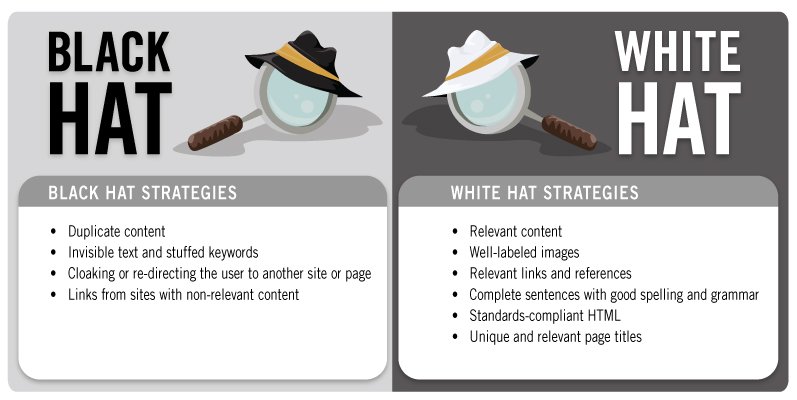
Needless to say, you’ll only hear and see me talking about white hat SEO.
Choose your side of the force wisely, young Padawan.

Unfortunately, it’s not always that easy.
As you know, life’s not always black or white.
The same holds true for SEO. There’s actually something in the middle of the ‘white vs. black hat debate’ that I need to address.
Gray hat SEO, like its name implies, is a little white and a little black.
That means it’s not quite as pure or innocent as the whitest of white hats. But it isn’t quite as egregiously manipulative as black hat can be.
You’re not trying to trick anyone or intentionally game the system with gray hat. However, you are trying to get a distinct advantage.
See, Google’s standards aren’t as clear-cut as they’d like you to believe. Many times, they might even say contradictory things.
For example, Google has said they’re not a fan of guest blogging to build links.
But what about guest blogging to grow your brand? What if you do it to build awareness, generate high-quality traffic back to your site, and become a household name in the industry?
Those are all legitimate reasons to guest post and why I still recommend it.
Other people might disagree with me on this point, and that’s OK.
That’s what makes online marketing, and SEO in particular, so fun. It’s a game. And two opponents can try different methods to win.
SEO changes all the time. The rules are often ill-defined.
Besides, most of what we know as ‘the rules’ are simply just SEOs making predictions or looking at correlating data trends.
That’s why there’s so much room for gray hat SEO to sneak in.
Many classic link building techniques, like using scholarships to build links, can also go either way.
Some people say it still works. Others say it’s dead.
If often depends a lot on how you do it.
Super smart SEOs, like Ross Hudgens of Siege Media, talk a lot about scalable link building tactics.
All marketing tactics need to be scalable at the end of the day if they’re going to generate any ROI.
But here’s the problem with that notion.
Almost every ‘scalable link building tactic’ is borderline black hat depending on how you do it.
Ross shows examples of this time and time again where even massive brands you visit daily, like The New York Times, have built links. You could technically consider that this goes against Google’s rules.

Now, it might be easy to build links in some industries, like technology or nutrition. There are thousands of blogs online that talk about this stuff daily.
But what if you work for a supplement company?
Did you know MailChimp won’t even let supplement companies use their email marketing service at all?
How are they supposed to create connections, reach out to customers, and increase revenue (let alone build a few links)?
The same holds true in other less savory industries, like gambling for instance.
The chances of a journalist linking to your site in a flattering way are slim to none.
So many times, you’re going to have to take your chances.
Law firms also find trouble with building high-quality links. That’s why they often use scholarship link building tactics like we addressed earlier.

Another problem is that search engine rankings still aren’t as good as they should be.
Sure, new algorithm evolutions like RankBrain help dramatically.
But we’re not out of the woods just yet.
That’s why people like Glenn Alsop have openly admitted to doing gray or black hat tactics like creating their own private blog networks despite Google’s repeated warnings against this approach.
Glen points to a single search result page for the ‘Future of blogging’ query as an example.

His site ranks at the bottom of that example. But he points out that:
- He has more links to the page than the competition.
- He has a higher domain authority than the competition.
- He has better on-page markup than the competition.
So what’s happening here? What could possibly be the explanation?
Google generally admits that those three indicators are the most important. SEOs all agree on that, too.
And yet that’s not happening in real life.
You can still game or manipulate the system to a certain degree.
It’s not as bad as it used to be, but the problem still exists.
Last year, WordStream founder Larry Kim gave a few unique SEO predictions for this year.
And one of them focused on increasing search engine result page (SERP) click-through rates (CTR) to get more traffic.
He predicts that ‘engagement hacks’ like this one will become a new gray hat tactic.
Another example could include driving up your Facebook engagement to help give your organic reach a little boost.
I’m not saying gray hat is good or bad. That’s for you to decide.
But I am shining a light on something you rarely hear people discuss in public:
SEO is a zero-sum game.
Many of your competitors will do whatever it takes to reach the top. That displaces you, pushing you further down into obscurity.
So you need to decide which path you’re going to take and what degree of risk you’re comfortable accepting.
Cleaning inside your house and outside: on-page SEO vs. off-page SEO
There are two broad categories of SEO: on-page SEO and off-page SEO.
On-page SEO concerns all of Google’s ranking factors that they determine by directly looking at the page you try to optimize, such as your headlines, content, and page structure.
Off-page SEO refers to all variables Google takes a look at, and they aren’t exclusively in your own hands. They depend on other sources, such as social networks, other blogs in your industry, and the personal history of the searcher.
They’re different, but you need to get both right in order to do well with SEO.
To give you a better idea of what that means, here’s an example:
Let’s say you have a house with a garden in the front yard and a little pathway that leads through your front yard to your house.
Imagine these two scenarios:
Scenario #1: Your house is super clean on the inside, but your front yard is a mess.
What happens in this scenario? Well, even if you have the cleanest Mary Poppins-style house on the inside, if your garden looks like the forest from Sleeping Beauty, no one will come into your house in the first place.

It’s the same if you haven’t optimized your page around on-page SEO. It may have great content and look stunning, but it’s likely that no one will give you credit for it or point to your page.
No one will ever see your beautiful masterpiece because you won’t get any traffic.
What about the other way around?
Scenario #2: You have neatly trimmed your lawn, but the inside of your house is a mess.
Turn things around, and they look similar: Having a nice lawn will attract plenty of people to come visit your house, but if your living room reminds your guests of a war zone, they’ll leave quicker than you can pronounce SEO.
When a visitor leaves your site after viewing only one page, Google considers that a bounce. The higher your bounce rate (number of visitors who leave your site instantly), the worse your page will rank on Google.
That’s why you need to do both on-page SEO and off-page SEO.
You can do several things on your page to get the former right and then even more things outside of that (off the page if you will) to ace the latter.
We’ll take a look at on-page SEO first.
On-Page SEO
There are three big categories of on-page SEO that you’ll need to take a look at. The first and most important is content.
CONTENT
You’ve probably heard it before: “Content is king.” Bill Gates made this prediction in 1996, and it’s as true as ever today.
Why?
Because a Google search engine customer is happy when he finds the result that serves his needs in the best way.
When you Google “quick and easy homemade mac and cheese,” Google will put all its energy into delivering to you what Google believes is the best recipe for homemade mac and cheese (that takes little time and uses few ingredients) on the entire web.
It doesn’t look for just the quickest recipe, just the easiest recipe, or throw out a bunch of online shops for frozen dinners. It tries to give you exactly what you asked for.
Google always tries to give you the best experience possible by directing you to the greatest content it can find.
This means that your number one job to do well with SEO is to produce great content.
That’s a bummer, right? You still have to put in a ton of work.
SEO is no different than any other skill: great results will always come from big effort.
Just like the best marketing in the world won’t help you sell a bad product, super advanced SEO will be useless if you’re content just plain sucks.
Here are the factors that make up great content in Google’s eyes:
Quality – While the times where just delivering the best-quality content would make you stand out from the crowd are long gone, it is still the starting point for any successful SEO effort (and any online business, really).
But coming up with great content is not easy. After all, it means that you have to become a teacher — and a good one at that.
Yet, you don’t have to start from scratch. You can often start by piggybacking off of content that others have created and then making it better, longer, and more in-depth.
Or maybe you have your own ideas already. If you do, then it might be worth brainstorm for a while and then come up with a compelling headline to start out with.
Once you start writing, make sure you include all the important ingredients of great content in your blog post.
Even if you’re a complete newbie, you can always take a professional approach to great content by simply committing to make writing a daily habit and work your way up in increments from there.
Keyword research – Doing your keyword research up-front is a crucial part of great content.
Since you ideally want to include your targeted keyword in your post’s headline and throughout the article, you need to choose your keyword before you start writing.
I’ve covered keyword research extensively on Quick Sprout, but if you’ve never done keyword research before, you might want to take a look at Hubspot’s guide for beginners.
Out of all on-page SEO factors, this is the one you should spend the most time learning. You don’t even need to buy a book. Backlinko’s definitive guide to keyword research will do.
When I say don’t sleep on this, I mean it. There’s a reason we took the time to compile the top 40 posts on keyword research on Kissmetrics.
Use of keywords – Google has gotten smarter over the years. While you should, of course, use your keyword throughout your content, jamming your keyword into your text as much as possible will hurt your rankings rather than improve them.
Keyword stuffing is an absolute no-go these days.
Today, the use of keywords is much more about semantics. Google has gotten so good at interpreting the meaning of searchers’ keywords that it’s creepy.
It not only looks at your keyword but also synonyms of it to understand what you mean when you type in something like “five guys nyc.”

Google will know that you’re probably not looking for five random males, but rather, it guesses that you’re looking for the fast-food chain “Five Guys, Burgers & Fries” by looking at similar searches that may include the keywords “burgers” and “fries.”
As long as you make sure your keyword is present in strategically-important places (like headlines, URL, and meta description), there is no need to mention it tons of times in your text.
Just focus on the reader and seamlessly integrate your keyword a few times.
Freshness of content – Hubspot has done a benchmark this year that showed, once again, that posting more frequently improves Google rankings.
However, posting new content is only one way to signal Google freshness. There are plenty of things that you can do with content that you’ve already published to make it more up-to-date.
Brian Dean from Backlinko, for example, has only published around 30 posts in two years. Yet, he keeps all of his posts up to date by rewriting them and adding new information as he finds it.
While it is important to publish regularly, you can still get great results by posting once a month as long as your content is thorough and in-depth.
Direct answers – Finally, Google will sometimes provide searchers with direct answers right on the SERP. If you write your content clearly enough for Google to recognize it as an answer to a particular question, it will show up directly beneath the search bar.
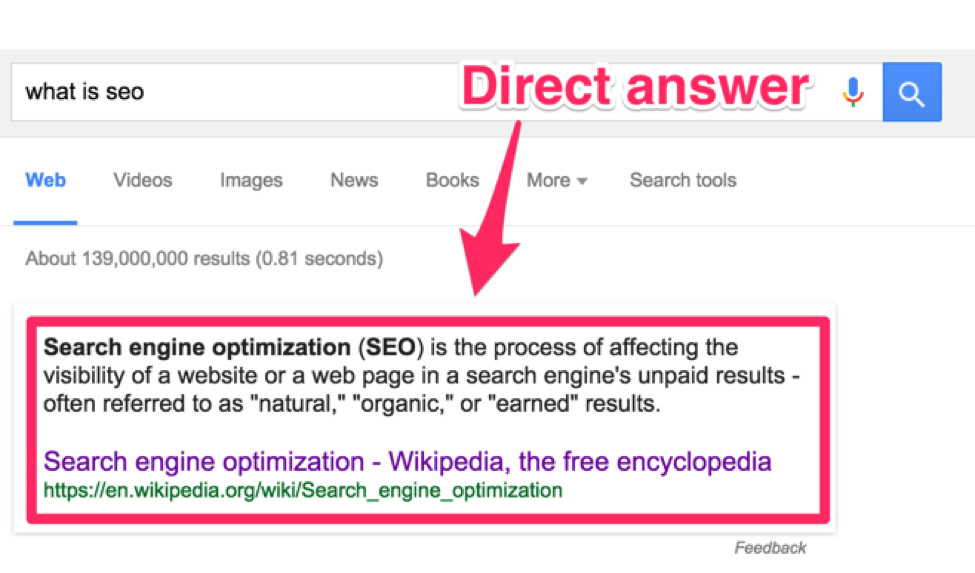
Matt Cutts, former head of Google’s spam team and often public voice for the latest in SEO and algorithm changes, announced last year that people who were cutting the jargon would be right on track.
That’s why detailed guides and long how-to’s have become more and more popular. So make sure you clear up your writing. Fancy buzzwords and complex sentence constructions will neither make you sound smart nor help your SEO game.
Moz has listed out all critical aspects you have to keep in mind if you want to do well with direct answers.
KEYWORD SELECTION
We just briefly touched on keyword research.
But it’s such a massively important topic that it deserves its own section.
The reason is that something like 90% of SEO often revolves around keyword selection.
I just made that stat up, but you get the point.
Keywords dictate what each piece of content is about.
It dictates what you call your site or how you describe your brand online.
Keywords even dictate how you build links, including everything from the tactics you choose to how you plan on implementing them.
Another common mistake people make is that they stop.
Maybe they redesign their website or come out with a new marketing campaign.
They do it for a week or two, update their pages, and then stop.
They think keyword research is a one-and-done thing. In reality, it’s the exact opposite.
The best SEOs are constantly doing keyword research.
They’re also constantly reevaluating if the keywords on their existing content still make sense.
Here’s how smart people make bad keyword decisions.
Common keyword research mistake #1: Picking the wrong keyword
Let’s say you sell consulting services.
Your service might cost customers $10,000 over the course of a year.
That’s a little less than a thousand bucks a month, so it’s not out of the question.
But it’s still fairly expensive.
Now, if you’re ranking #1 for “free business growth tips,” guess what kind of audience you’re going to attract?

You’ll bring in people looking for free stuff! And that means that they probably won’t hand over their credit card the moment they hit your site.
That one keyword could send your site thousands of people each month.
However, it’s probably the wrong audience. So it doesn’t make sense to rank for it!
You’d be better off picking a different keyword even if it means giving up 990 visits a month.
Think about it: if just one or two people who read that convert, you’re already ahead.
This isn’t the only common mistake I see, though.
In fact, this next one is even more common.
Common keyword research mistake #2: Ignoring the competition
You’ve selected the right keyword from the get-go.
It’s contextually relevant to what you do. And it better aligns with what you’re trying to sell.
So what is the very next thing you do?
You open up a keyword volume tool like the Google Keyword Planner or even a paid one like SEMrush.
You type in a few ideas and get the results back.
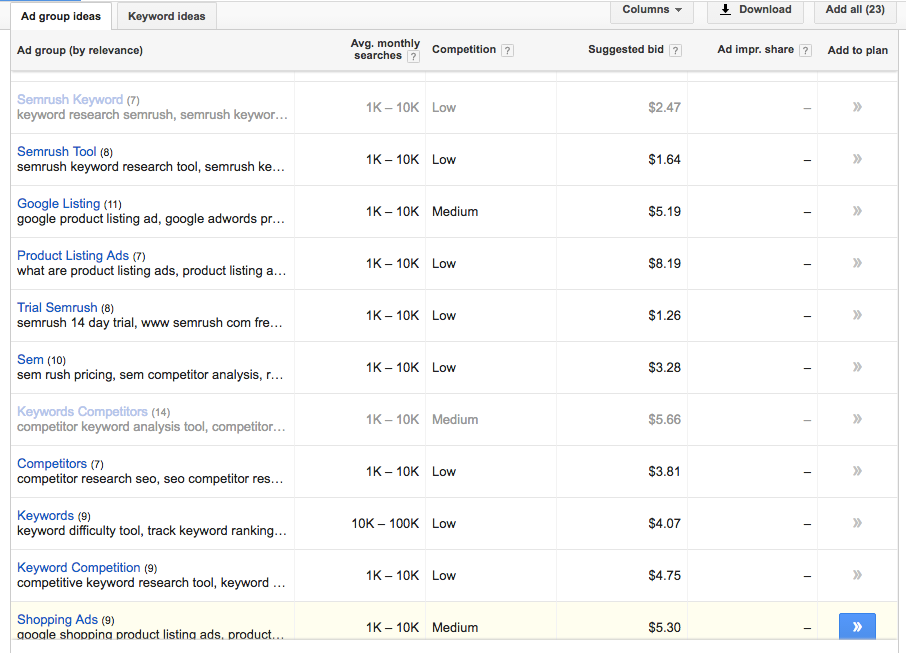
Naturally, you start gravitating toward the ones with the highest number of searches.
But here’s the thing you’re missing.
Your ability to rank for a keyword often depends more on the competition you’re up against.
Check out the keyword “content marketing,” for example.

It gets around 6.5-9.5k monthly searches. That’s pretty good!
It’s not one of the most popular on the web by any stretch. But it’s a good start.
The problem happens when you compare your own site to the ones currently ranking.

Do you see the domain and page authorities for those sites?
Do you see the number of linking root domains they each have?
It would take most websites months (if not years) to get anywhere close.
That means that your chance of pushing one of us out of the top three is slim to none.
So what happens next?
People go straight to long-tail keywords as a result.
They assume that just because the volume will be much lower for these, the competition will be, too.
Unfortunately, that’s not always the case.
Check out the “content marketing agency” search query to see why.

The volume is way less at only around 100 visits. It seems like the perfect long-tail keyword.
Except, there’s just one problem. Check out this competition.

All of these sites have been around for years.
They all have hundreds (if not thousands or tens of thousands) of links.
The competition for this query is just as competitive as the first popular one.
So this one is worse than the first one. If you were to somehow rank at the top of this one, you’d barely get any traffic!
The demand for this query is just too low given the high competition level.
So once again, it doesn’t make sense.
What do you do next?
How can you possibly find keywords that are:
- Relevant to your business
- Not too competitive
- But still provide enough traffic to be worth the effort?
That’s the golden question.
The answer is that you have to think outside the box. Here’s how.
Keyword research tip #1: Focus on search intent
Most people focus on keywords.
Counterintuitively, that’s now what you want to do.
Instead of looking at what people are typing in, you should be trying to identify what they’re searching for.
This is what “search intent” refers to.
And it’s the difference between getting a tiny bit of traffic and driving real revenue.
Let’s kick things off with a basic scenario to highlight the difference.
You own a job site.
You make money by getting companies to run job post listings on your site.
That means that you need to get job pages ranking well so that people come to your site instead of Indeed or somewhere else.
The more people who find jobs through you, the more you’ll get paid.
But watch what happens with a keyword like “engineering jobs.”

The results are all over the place!
Some refer to mechanical engineers while others focus on software or entry-level positions.
The intent behind each search is completely different.
That’s what you need to pinpoint.
What exactly is this user looking for? Which type of engineering job are they interested in?
Fortunately, this problem highlights how we can eventually solve it by coming up with good keywords that aren’t too competitive.
Indeed.com might be a tough competitor right now. So you need to find different alternatives based on search intent.
First, look at Google’s own suggested searches for that query.

These are other common searches that people perform.
Already, you have a few potentials.
“Mechanical,” “civil,” and “industrial” might be highly competitive. But what about “environmental” or “audio”?
Scroll down to the very bottom of the SERP to get even more suggestions from Google.
The “aerospace” one is especially interesting.

Let’s look at one last example to see the role search intent plays in keyword selection before moving onto another tool.
But let’s start this one with a question:
What is someone looking for when they type “best marketing automation tool” into Google?
Yes, they’re looking for a marketing automation tool. Except, they aren’t ready to commit to one just yet.
Instead, what they’re doing is looking for a way to evaluate alternatives. They’re looking for a side-by-side comparison so they can compare apples to apples.
Now, watch what happens when you run that search query into Google.

I highlighted the first paid result and organic ranking because they’re going after search intent.
They’re trying to understand what people are looking for and not just what they’re typing in. Then, they’re giving it to them.
The other paid results in the middle are just trying to sell you a tool despite the fact that people searching here want to look at multiple options.
Those companies are looking at a list of keywords without considering the underlying motivation of each user.
It’s like tunnel vision.
You pull up a list of keywords in some tool, rank by search volume, and run down the list.
Instead, you need to expand your options like you saw a second ago with Google’s own suggestions.
AnswerThePublic is another of my favorite tools to do this because it uses actual search queries to build a list.
Search for “best marketing automation tools,” and it will break the list down even further.

One of my favorite graphs will even help you segment exactly who’s searching for this.

For example, this graph shows that the following people are searching for “best marketing automation tools”:
- WordPress users
- B2B professionals
- Small businesses
- Startups
Each of these is a completely different audience.
Each might have their own budgets.
A venture-backed startup is willing to pay more than a small business, for instance.
Each also has their own needs.
WordPress users will want a simple plugin to run campaigns directly from inside the application, whereas a B2B professional might be platform agnostic.
Or, they might want to run their website through the automation tool so that there’s less to manage.
See the implications of that?
It changes which keywords you target.
The pages you build or the blog posts you create will address subsets of each one to compete for the best keywords in each space.
But it even impacts the campaigns you’re eventually going to run.
If you’re trying to get press mentions and you’re going after WordPress users, that means you’re going to target WordPress-specific sites and bloggers.
You’re going to pitch or advertise on WPBeginner instead of Inc.com even though their readership is less.

Your odds of success will be higher due to less competition. And the site’s audience will be far more interested in what you have to sell.
That means that you’ll not just get better links or search rankings, but also a lot more revenue.
HTML
Once you’ve made sure your content is evergreen, the next big chunk you have to take care of is HTML.
You don’t have to be a professional coder or get a degree in programming by any means. But, running an online business without knowing the basics of HTML would be the same as driving without knowing what the colors of traffic lights mean.
Thankfully, with places like Codecademy or Khan Academy, there are more than enough possibilities to learn everything about HTML that you need in the blink of an eye and for free.
Heck, you can even learn it on the job by just using a simple cheat sheet like this one.
Let’s take a look at the four parts of HTML you should optimize for each and every single piece of content you produce.
Title tags – Title tags are the online equivalent of newspaper headlines. They are what shows up in the tab of your browser when you open a new page.
The HTML tag for them is called title. But when it comes to blogs, it often becomes an h1-tag, which stands for heading of the first order.
Every page should only have one h1-tag to make the title clear to Google. We’ve shown you how to do this at Quick Sprout University, but the website First Page Sage has compiled a few more things that you can do to get these right.
Meta description – Meta descriptions are what show up as an excerpt when Google displays your page as a result to searchers. It’s easy to spot who’s done their SEO homework and who hasn’t by the meta description.

If you optimize a meta description result, Google will never cut it off and end with “…” or make it seem like it ends mid-sentence. Optimized meta descriptions also often mention the content’s keyword up-front.
You can learn how to come up with great meta tags on Quick Sprout University, and should also check out some good examples to get a feel for descriptions.
Don’t overthink this 160 character text snippet though. When writing it, you should keep the searchers in mind much more than the search engines.
My favorite way to edit both of these is by using the Yoast SEO WordPress plugin.
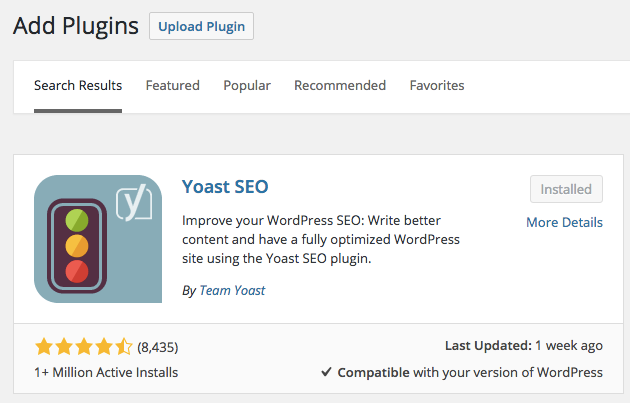
I use it across a lot of my sites because it’s simply the best SEO plugin on the market.
It’s the most popular, they update it almost weekly, and it includes a lot of advanced time-saving features.
It will not only help you quickly edit your titles and metadata, but it will also:
- Help you set metadata for each social network so that Facebook, Twitter, etc. will properly format your rich data, such as the images.
- Dynamically create and update your XML sitemap as your site evolves.
- Integrate with your Google Search Console out of the box so that you can quickly find and fix the biggest problem areas on your site.
- And lots more!
For example, instead of having to customize each page or post manually, you can create default settings for your titles and metadata.
You can even add extra features. Two of my favorites are the Readability and Keyword analysis tools that help give simple benchmarks to people you’re working with or outsourcing to.
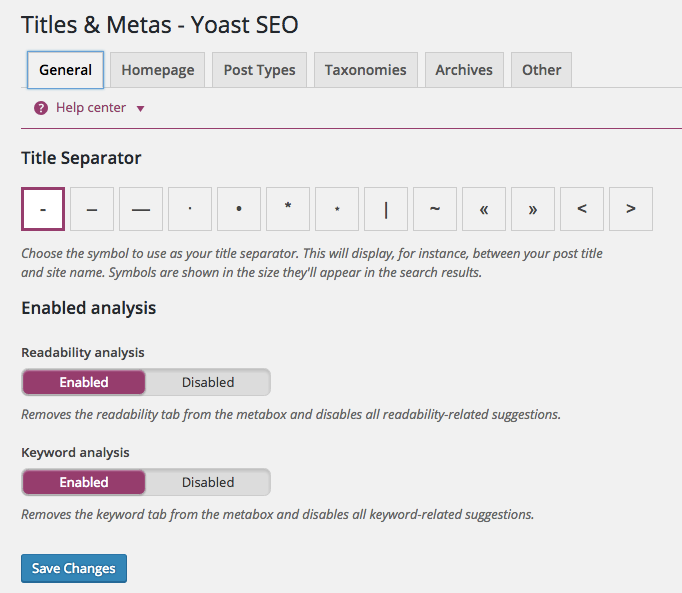
That way, there are clear indicators for them to hit before ever publishing directly to your site.
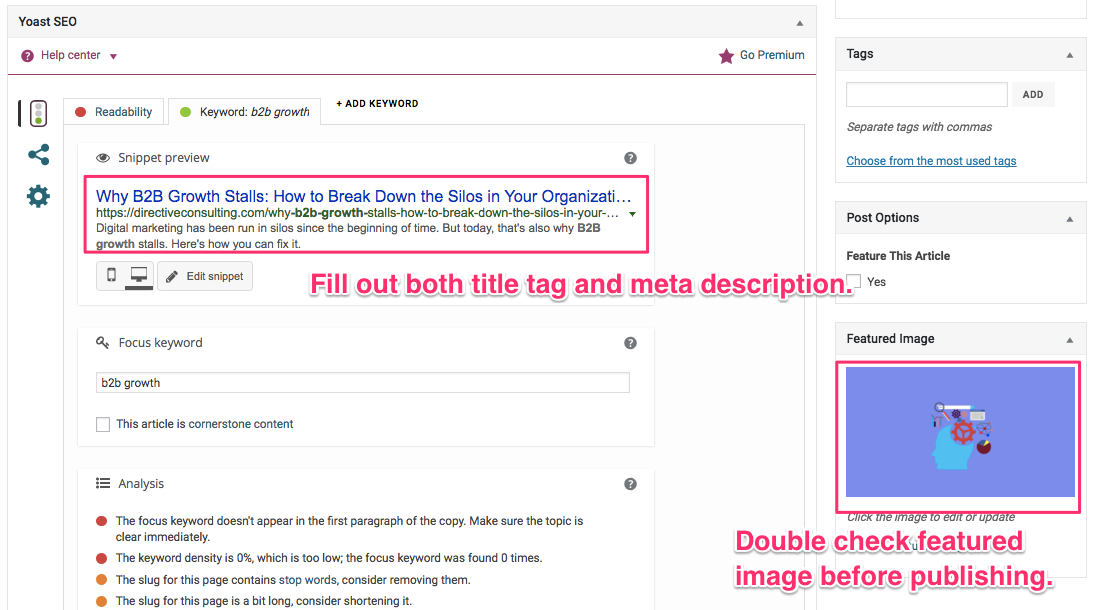
Schema – Schema is the result of a collaboration of several search engines. It’s basically just a subset of specific HTML tags that will improve the way the search engine result pages display your content.
For example, the author of the above example with Bitcoin used Schema to create the rating that Google displays on the SERP. It’s a rather small factor, but definitely good practice.
Moz has some good tips on how to get the most out of Schema. When you’re done, don’t forget to test your page to make sure everything runs smoothly.
Subheads – I’ve previously identified subheads as one of the seven things every great landing page needs.
Not only do they help format and structure your content and give your readers easy reference points, but they also affect SEO.
Compared to your h1-tags, your h2, h3, h4, and further subheads have less SEO power. But they still matter, so you should use them.
Plus, it’s one of the easiest SEO wins you can get on WordPress.
How to diagnose these HTML improvements – Google’s Search Console (formerly Webmaster Tools) has an “HTML Improvements” report that will help you spot some of the issues that I highlighted above.
Google uses your site’s metadata, including the title tags and meta description, to figure out exactly how to classify your site and then tell users about it.
Inside this report, you’ll be able to quickly diagnose if:
- You have duplicated them across other pages or posts on your site.
- They are too long, truncated, or cut off before people can fully read them.
- They are too short so that they’re not descriptive or helpful enough.
- They simply aren’t informative enough and are lacking keyword intent.
The report will give you a sitewide analysis.

Then, you can click on the number by each one to dive into the specific page or post issue.

ARCHITECTURE
The third and last part of on-page SEO that I’ll cover is site architecture. While this part gets super-techy really quickly, there are a few simple things everyone can and should take care of to improve SEO rankings.
A good website architecture leads to a great experience for the user when he or she navigates your page. It focuses on things like fast loading times, a safe connection, and a mobile-friendly design.
Ideally, you’ll map out the architecture of your site before even buying the domain. That allows you to really get into the head of your user and reverse-engineer your way to a great user experience (UX).
ConversionXL has published a great guide on how to make sure your UX rocks.
You also need to optimize a few things for a great “search engine experience.” The more accessible your website is to Google, the better it will rank.
Easy to crawl – Remember the spiders from the introductory video? These are the programs that “crawl” from one page on your site to the next through links.
Depending on how well they can index all the pages on your site, they’ll be more likely to report back to Google that you are a good result.
The thicker the web of links between pages of your site, the easier it is for the spiders to reach all of them, giving the search engine a better understanding of your site.
You can make this job easier for Google by creating a sitemap with a simple plugin if you’re on WordPress or an online XML sitemap generator.
To see a crawl in action, you can use this tool.
Duplicate content – There are a lot of myths ranking around duplicate content and how it hurts your rankings. A common mistake is to think that everything on your page should be original. Because the fact is, search engines do not penalize websites for duplicate content.
Re-posting your content on other websites or publishing your guest posts again on your own site doesn’t hurt your SEO unless you do it the wrong (spammy) way.
For example, if you re-post your exact same content to a big outlet like Medium, it might hurt your rankings because Google indexes your Medium article first since it’s on the more authoritative domain.
We often refer to this as a “canonicalization” problem.
And many times, it’s already happening on your site without you even realizing it.
Here’s a perfect example from my site.
Visit “NeilPatel.com/blog/,” and you’ll see something that looks like this.

This is the blog category page that displays the most recent posts.
Each post features a title, an image, and a share or comment count.
Now, compare that to another blog example like MarketingLand.com.

Here, the latest posts feature an image and a title. But they also include a short description of the post.
This is pretty common across all blogs.
That’s because the theme you’re using (like on WordPress) often pulls this excerpt automatically.
And it’s pulling it from the first few lines of the blog post.
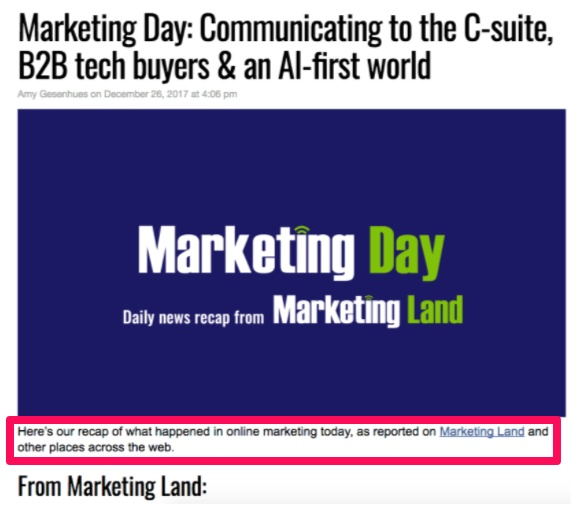
Like I said, this happens automatically.
This feature is typically built-in by the theme’s developer because it can help readers see what the post is about.
However, it also has the potential to create canonicalization issues.
Technically speaking, that’s duplicate content.
The same exact information is showing up in the individual blog post and the blog category page.
Multiply that by thousands of blog posts, and you have an issue all of a sudden.
There are several ways to fix canonicalization issues like these.
But the exact solution depends on what’s causing the original issue.
For example, removing a few lines of code from your blog theme will fix the above issue in about 30 seconds (if you know what you’re doing, of course).
So even though Google Search Console or another tool says you have thousands of duplicate content errors, you really just have one big root cause.
If you have multiple versions of the same page, the canonical tag can help you specify which content is the original.
All you have to do is drop in a single line of code that references the original page URL like this.

Fortunately, plugins like Yoast SEO make this simple.
You can set the default page or post version as the canonical so that it always adds this line by default.
Alternatively, you can specify it manually under the advanced settings options for each page or post:

I’ve also put together a guide to show you how to address the issue with rel=canonical tags for links on Quick Sprout.
Another time-saving WordPress tip is to use the Quick Page/Post Redirects plugin.
This one is helpful if you’ve had old pages morph into new ones. This often leaves behind a wave of broken links, too.
Install the plugin, and you can add the old URLs in bulk and then the new version of each page.

Use this one with the Broken Link Checker plugin to see which URLs you need to redirect.
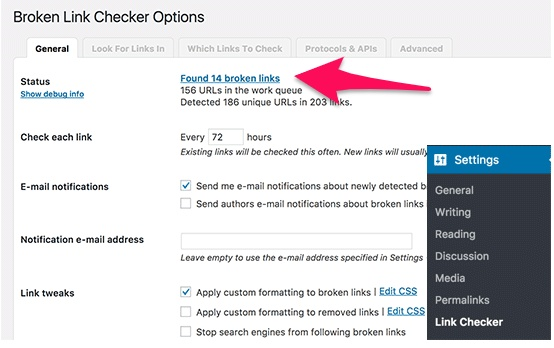
Most SEO-focused tools like Moz will also crawl your site like search engines to audit these common issues.
Duplicate content and broken links (or 404 errors) are the two most common crawl errors plaguing most websites.

If you’re not on a content management system like WordPress, you’re going to have to edit the .htaccess file of your site to include 301 redirects. I’d strongly recommend educating yourself about 301 redirects and getting some professional help in this case.
Mobile-friendliness – Let’s face it: if your page isn’t mobile-friendly, you lost.
Over 54% of Facebook users access the network exclusively on their mobile devices. Considering that Facebook now has 1.65 billion monthly active users, that number represents nearly 900 million mobile-only users!
You simply have to keep mobile devices in mind these days.
While there are several ways to make your pages mobile-friendly, I recommend you start by checking with Google’s tool how you hold up right now.

Most WordPress themes are mobile-friendly from the get-go these days, and if not, you can always install a plugin to take care of that.
You can also just implement Google’s suggestions from the tool yourself or hire someone to make the changes.
Page speed – Don’t fool yourself. You know just how important this is.
Remember how angry you were the last time the WiFi took 20 seconds to load a page?
Today, we value our time more than anything. Long loading times can absolutely kill your conversions.
Google’s recent speed industry benchmarks proved this point. Their research shows that “the probability of someone bouncing from your site increases by 113 percent if it takes seven seconds to load.”
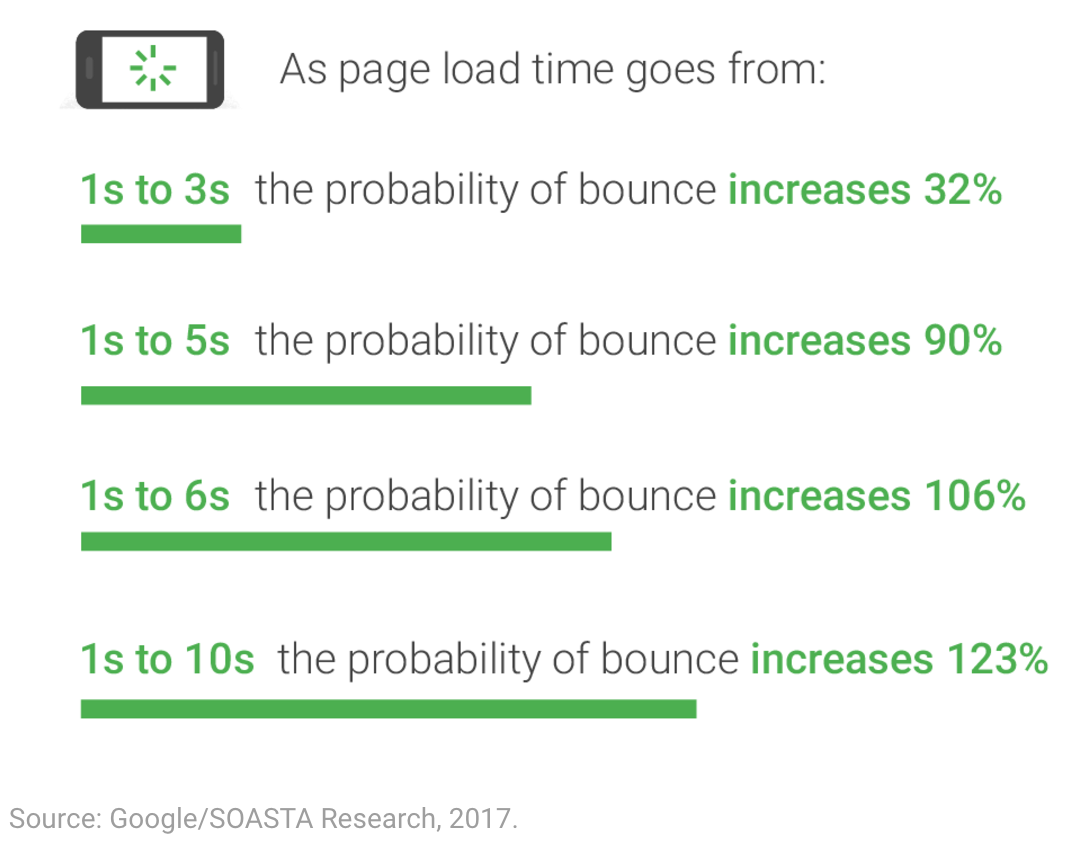
And based on their findings, the average loading time was over 22 seconds. That’s over 3x longer!
You can use Google’s Test My Site tool to get a quick read on how well you’re doing (or how much work there is left to tackle).

Another one of my favorite tools to track page speed over time is Pingdom.
This will monitor site performance in general including uptime.
You can even track your site from different locations around the world to make sure it’s in tip-top shape for international and multilingual users.

ConversionXL has identified a few low-hanging fruits for increasing your website speed, and at Crazy Egg, we show you how to squeeze out that extra second to improve your user experience.
But here are some of the biggest issues to watch out for.
Start by reducing the number of average requests to fewer than Google’s recommended 50 if possible.
When someone types your web address into their browser, they’re “requesting” that your servers send over information.
The smaller the data their shipping out, the faster you servers will send it.
Both the GIDNetwork and GZIP will help you figure out how to compress the information on your pages to reduce requests.
You should also “minify” your site’s code to reduce size. The WP Super Minify WordPress plugin can do it for you automatically, so you don’t even have to know how it combines stylesheet data.

Content Delivery Networks (CDNs) are another fast, easy way to reduce requests.
Most websites today are full of high-resolution images. However, the better they look, the bigger the size.
A CDN like Cloudflare will take images off your own servers. They’ll host them on their global network and deliver them to users from the closest point possible to decrease loading times.

WP Smush.it (WordPress) or Compressor.io (non-WordPress) can also help you reduce image sizes prior to uploading.
They’ll compress the file to reduce the size without sacrificing any visible quality.

Keywords in URLs – Including your targeted keywords in the URLs of your blog posts is a must. You shouldn’t squander those SEO points.
You might have to change the structure of your permalinks on WordPress, and you should certainly keep your human users in mind. But including your keyword in your URLs is a no-brainer.
HTTPS and SSL – SEOs have considered security to be a ranking signal for some time now.
However, Google’s not stopping there.
They’re also now actively warning people when websites are not secure.
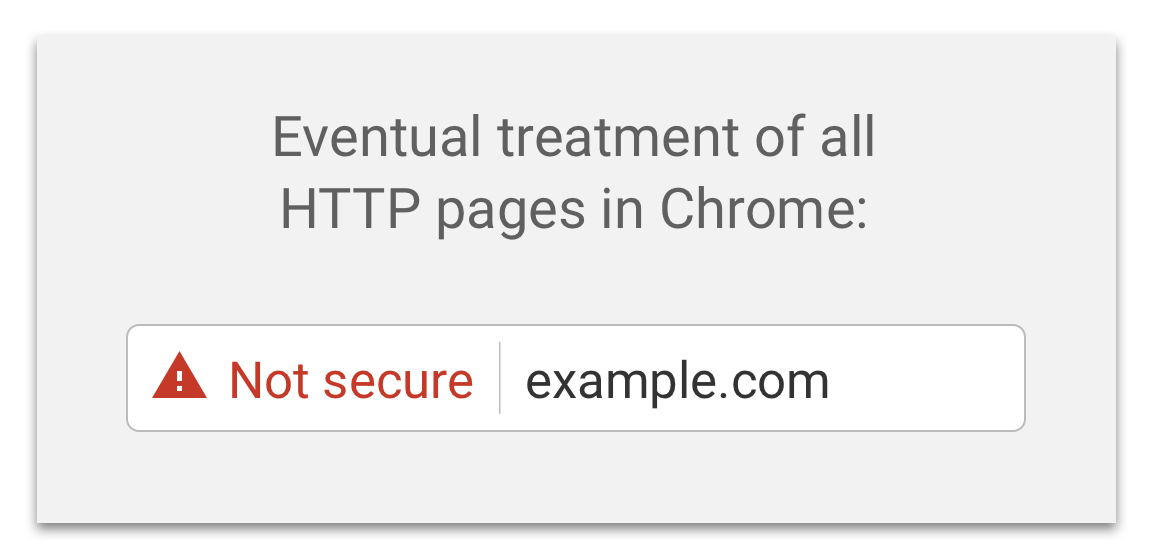
These warning notifications will essentially tell people not to give your website their personal information (or worse, their credit card numbers).
This is a big problem considering that Chrome is the most popular browser in the world.
One of my favorite mind mapping tools is XMind. But check out what happens when you hit their homepage.

Fortunately, their product and checkout pages are secure.

But the last thing you want after working so hard to get traffic to your site is for them to bounce immediately because a big, red notification from Google is warning them away.
There are two common security protocols: HTTPS (a secure version of HTTP) and SSL (Secure Socket Layer).
Both of them work and are worth considering even if they won’t up your SEO game too much.
Moving from a non-secure connection to HTTPS or SSL is a bit of work, but it’s worth your time. If you’re starting out with a new domain, consider purchasing it as an option from your domain registrar or web hosting service.
Technically, there are five different SSL options to choose from:
- Single Domain: This option protects one single domain name. It won’t, however, work on subdomains (like “blog.neilpatel.com”).
- Multi-Domain: Your second choice will cover multiple domains like “neilpatel.com” and “quicksprout.com.” But once again, it won’t cover subdomains of individual sites.
- Wildcard: This one will cover subdomains. So if you have “blog.neilpatel.com” and “shop.neilpatel.com,” you’re good to go.
- Organization: This one is similar to the first, but it doesn’t cover as much security for e-commerce transactions.
- Extended: And finally, this one will give you a few extra benefits like the name showing in the green address bar. But it also requires a bit of extra work.
Technically speaking, each one of those options is secure. The difference lies in how you’re going to use it.
You can purchase these directly from your domain registrar. Otherwise, many other hosting companies like WPEngine and A2 Hosting will help you set them up.
There are also WordPress plugins like Really Simple SSL that will help you quickly set one up.

Off-Page SEO
Alright, time to step outside your house and take a look at the front yard. I’ll now show you four big areas of off-page SEO.
If you want a solid overview on one page, consider looking at Shane Barker’s great infographic.
TRUST
PageRank, the famous formula that the founders of Google invented, certainly isn’t the only measure they take when ranking pages in the top ten search results.
Trust is getting increasingly important, and most of the recent Google updates have hit spammy and obscure websites.
TrustRank is a way for Google to see whether your site is legit or not. For example, if you look like a big brand, Google is likely to trust you.
Quality backlinks from authoritative sites (like .edu or .gov domains) also help. There are four parts to building trust.
Authority – Google determines the overall authority of your site by a mix of two kinds of authority that you can build:
- Domain authority, which has to do with how widespread your domain name is. Coca-cola.com is very authoritative, for example, because everyone has heard of it.
- Page authority, which relates to how authoritative the content of a single page (for example a blog post) is.
You can check your authority here on a scale of 1-100.
Two other popular authority metrics are the domain and page authority numbers from Moz.
Moz also bases this score out of 100. But it’s a weighted scale.
That means that it’s relatively easy to go from 0-20. However, anything over 50-60 is pretty high.
And 80-90 is often the highest in a particular industry.

To improve your authority, use the cheat sheet that I came up with to increase your authority without cheating.
But what’s the simplest way?
High-quality, editorial links almost always reign supreme.
For example, try to do things that will encourage mainstream media sites to feature you.

No, this isn’t easy.
Yes, it takes a lot of time.
But it’s worth it because links like these are virtually algorithm-proof.
Remember earlier when we spoke about how guest blogging could be white, gray, or black hat depending on how you use it?
Getting third-party validation like this from top publications is as white hat as it gets.
Bounce rate – Your bounce rate is simply a measure of how many people view only one page on your site before immediately leaving again.
Content, loading times, usability, and attracting the right readers are all part of decreasing your bounce rate. The math is simple – the right readers will spend more time on a site that loads fast, looks good, and has great content.
Video is another great way to do so, but you need your video content to stand out and deliver. Buffer’s 5-step process is a great place to get started with video. And tools like InVideo make it very easy to edit amazing videos, even if you don’t have a ton of experience.

These website usage metrics give Google indications of quality.
For example, let’s say you’re looking for “pizza” near your home. You click on the first three results to compare each one.

The second and third options look good, so you browse around for a bit. You spend at least five minutes checking out each of those sites.
But the first one didn’t meet your expectations for whatever reason. Five seconds after clicking, you hit the back button to open the other results.
That tells Google something about that site, and it isn’t good.
They’ll factor that information into their results. They’ll see that users aren’t finding that first result helpful for this query. And they won’t hesitate to drop them.
That’s why click-through rates are becoming as important, if not more important, than rankings.
Domain age – Remember the times before young entrepreneurs like me were all the hype? Who were the most respected businessmen around?
It was the old guys. It was the Jack Welches and Warren Buffetts of the world.

With domains on the Internet, it’s similar. Domain age matters even if they only matter a little.
If you haven’t gotten your site up and running yet, consider finding an affordable, expired domain and using it.
Domain trust, authority, and age often have one other thing in common:
Your brand.
Identity – As I mentioned above, having a brand or personal identity online is a huge trust signal for search engines, but it takes time to build.
You know you’re a brand when you Google yourself and something like this pops up.

You don’t have to have a brand name. Creating your personal brand works just as well.
What’s more, building brand signals prevents you from future penalties through Google updates.
This partly explains why Google gives big brands preferential treatment.
It’s not just a crazy conspiracy.
It’s that more often than not, people prefer brands they recognize over ones they don’t.
One study from Search Engine Land and Survey Monkey found that “70% of US consumers look for a ‘known retailer’ when deciding what search result to click.”

Having a recognizable brand name was even more important than the price or quality of the product in question!
Think about this scenario for a second.
You need tires badly. Your personal safety is at risk on the road.
So who are you going to go with?

Will you pick the one that you recognize, has been around for decades, has a blimp, and appears in commercials?
Or would you take a huge risk on the unknown one?
LINKS
Just by how far you’re into this search engine optimization guide already shows you that the common conception of “backlinks are everything” is just wrong.
They’re only a part of SEO just like all the other areas I covered already. There are plenty of ways to get backlinks.
But no matter what you do, don’t just wait for people to link to you. That’s a fool’s game. You’re going to have to take the initiative and ask for them.
Consider these three factors when trying to get backlinks:
Quality of links – While links are not everything, when looking at links, their quality is everything. The quality of your links matters much more than the number of links you have.
Building quality backlinks is all about reaching out to the right sources and offering value in exchange for a solid link. I show you tons of ways to do this in our advanced guide to link building.
Most people only look at the total number of links.
And that’s a huge mistake for a few reasons:
- Search engines might ignore the vast majority of links if they’re low-quality or spammy
- Links from brand new sites are worth more than repeat links from existing sites
- Links from other websites are worth more than a bunch of links from your own site (from one page to another).
With all that in mind, now take a look at my site’s link profile.
Specifically, focus on the bottom half.

High-quality links matter more than low-quality ones.
“Total Linking Root Domains” tells you the number of unique sites that link back to you.
Followed, equity-passing, external links pass the most ‘strength.’
Often, the ratio of those numbers compared to the total links is a much better indicator of success.
Anchor text – The anchor text is the text that other sites use when they link to you, and yes, it matters. Differentiating between the types of anchor texts is part of the nitty gritty, but a good rule of thumb is:
The more natural the link text sounds, the better.
Here’s an example: You could either link to a guide on anchor text best practices by linking the words “click here” or by naturally mentioning it in the flow of your writing (like I did in the first half of this sentence).
The second category is called contextual backlinks, and that’s the one you should strive for.
Number of links – Lastly, the number of total links you have matters as well, and you need to build high-quality backlinks at scale over time.
We just touched on this.
It’s not just total links that you’re after.
However, at the end of the day, the site with the most high-quality links will usually have the better edge.
And it also depends on the pages you’re getting links to.
Here’s what I mean.
Links to your homepage are good.
However, most natural links won’t be to a homepage unless they’re mentioning your brand name specifically.
What you often find is that people will link down to pages or posts on your site.
If possible, you want to make sure the right sources are linking to the right pages.
What you don’t want is for your privacy policy to be your most linked-to page.
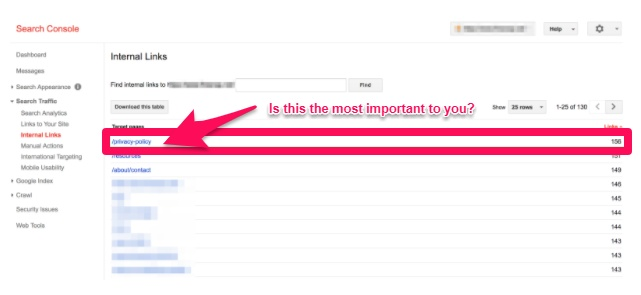
Why?
Because there’s nothing to buy from that page!
Visitors can’t give you their information or subscribe or buy.
That’s the first mistake.
The second is not considering how and where those links are coming from.
One of Crazy Egg’s most popular features is the heatmap.
It helps people pinpoint which site elements are aiding conversions and which are distracting people from converting.
So if you’re trying to get links to this page, you want to get links from landing page or conversion-related sources.
That might change for other feature pages like Recordings.
Here, a design-related link wouldn’t make as much sense. It’s not as contextually relevant.
However, if the page or post were speaking about usability or interface design, then it would be a decent fit.
So the quality source of the links you get matters. But so, too, does the place they’re linking to.
PERSONAL
The third category of off-page SEO that’s worth taking a look at is personal factors. While most of these are out of your control, there are a few things you can do to increase your chances of reaching a certain audience.
Country – All searchers see results relevant to the country they’re in. Open times of recommended stores and restaurants appear according to your time zone.

Search engines interpret words differently. Someone searching for “comforter” in the US will see blankets for their bed, whereas someone in the UK might see pacifiers because that’s what the term means there.
A way to tell Google that you want to target certain countries is, of course, by including them as keywords. But first, ask yourself if it’s worth it to go multinational.
There are also different competition levels from country to country.
Remember how keyword selection depends largely on the competition already ranking?
Well, Google Canada is going to have different results than Google South America.
That means that each country might have different levels of difficulty.
A multilingual site not only expose your information to more people in their native language, but it could also help you rank easier in other places.
I first saw the power of this when I saw a 47% traffic lift after translating my site years ago.

That’s why I now have sites in almost every language, including a Portuguese version for my Brazilian readers.

Creating multilingual content is hands-down one of the easiest ‘quick wins’ I’ve seen.
So what’s the catch?
Well, pulling it off isn’t easy.
Most of the web’s translation plugins aren’t very good.
Many will promise to automatically translate your content into almost any language.
But the end result isn’t natural.
Personally, I’d rather pay a little more to have native-speaking people help translate the content.
The quality and accuracy increase and that means that people stick around longer. And that means that my site usage data and rankings go up, too.
City – The geo-targeting goes even further. It goes down to the city level. That’s why you usually see results from right around the block when you search for a fast-food chain.
Again, using city names as keywords helps. But don’t paint yourself into a corner, or you’ll end up looking like you’re only a local authority.
Searcher’s history – If the searcher has been on the same page before, or even if they’ve just visited your site in general, you’re more likely to show up because Google thinks you’re a relevant result for them.
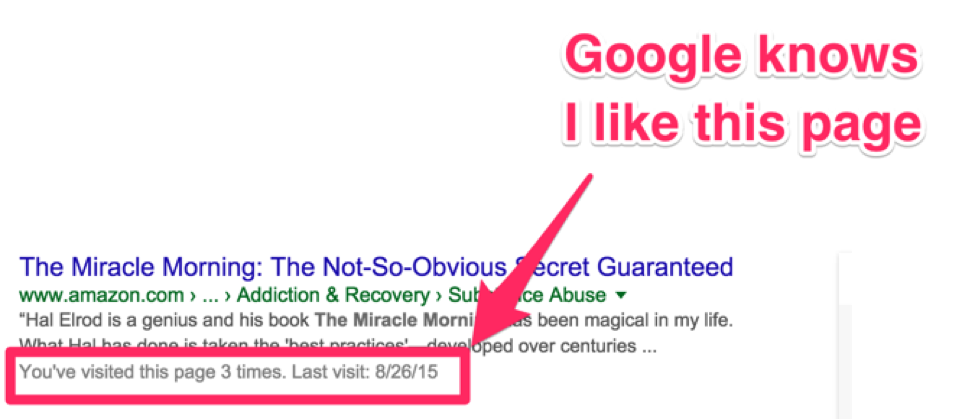
Socialization
Do you have a YouTube channel or a Google Plus profile for your brand? If so, the more people like you, the better.
When Google sees that someone likes a brand on a social network, they’re more likely to show them results from that brand or from personal contacts that they have.

SOCIAL
Lastly, let’s take a look at the social factors of off-page SEO. Besides social signals directly from the searcher, there are other ways good results on social media will help you rank better.
Whether that’s directly through more links or indirectly through a PR boost, social matters.
I’ve done several case studies on Quick Sprout, proving that social media is well worth your time.
There are two main factors of influence.
Quality of shares – As with the quality of backlinks, who shares matters more than how often. Google recognizes influencers, and when they share your content, their share has more SEO juice than your neighbor’s.
A great way to get influencers to share your content is by giving them a heads-up before you even publish it. Or better still, include them by quoting or interviewing them.
Of course, you should also tell plenty of online celebrities who are already interested in your topic.
There are a few ways to find these people.
The first is with Follwerwonk. It’s an analytics tool for Twitter that can help you find influencers just by searching for keywords in their bios.
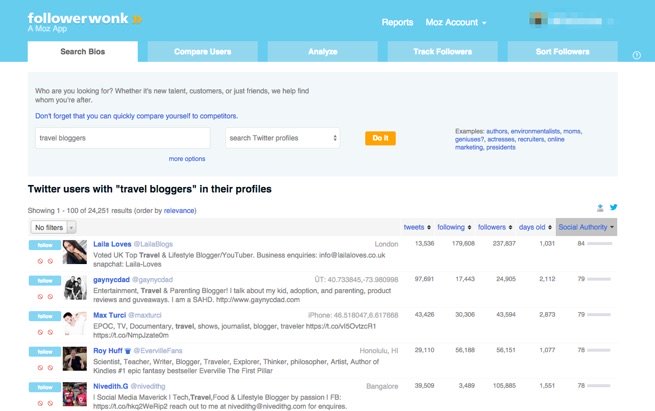
I like this tool because you can sort the influencers by different metrics.
Just like total links can be deceiving, so too is total followers.
Instead, I find engagement metrics like social authority a much better indicator of value.
New influencer marketplaces are also popping up to make this even easier.
Tribe will let you search through a massive database of content creators.
Again, you can sort them by metrics. But this time, you get their costs as well.
So, you can find ones that overlap or influence your audience and pay them to help promote your stuff.
And best of all, you can get all of the fine print ironed out before spending a single dollar.
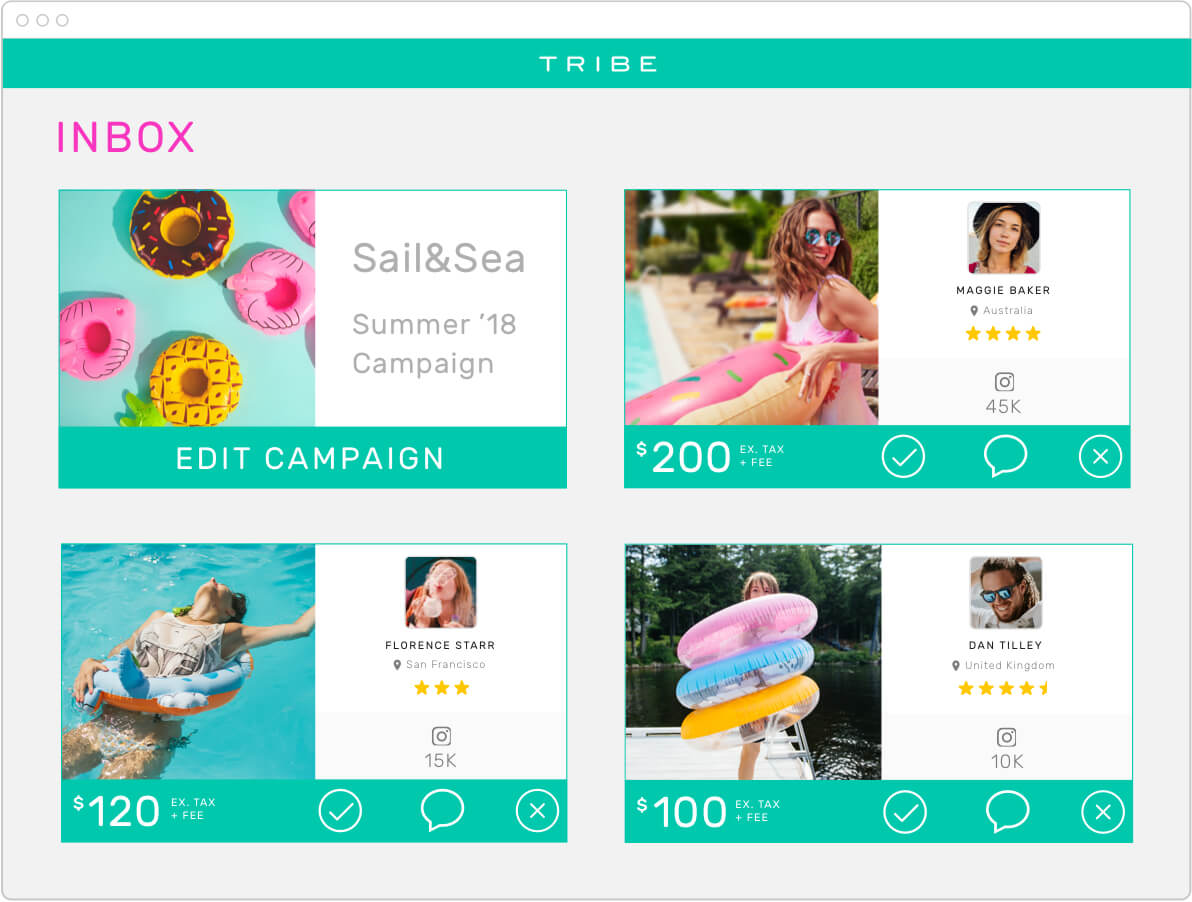
Number of shares – The secondary social metric is the number of shares. Landing a viral hit is every marketer’s dream, but it is overrated.
There are a lot of tips and hacks out there.
But the truth is a little simpler:
Make awesome content.
That means different things to different people.
For example, in the marketing space, I’ve found that long-form content almost always outperforms short-form.
But think about celebrity gossip sites for a second.
No one wants to slog through a whole bunch of words. The opposite is almost true here.
Their audience wants something succinct with a lot of drama. They want more videos and images with less text.
Just browse BuzzFeed.com or TMZ.com if you don’t believe me.

And it makes sense when you consider what makes content go viral.
Jonah Berger released a study years ago in the Journal of Marketing Research that found the following:
“Virality is partially driven by physiological arousal. Content that evokes high-arousal positive (awe) or negative (anger or anxiety) emotions is more viral.”
We started this article by talking about how many millions of posts people publish each day.
There’s a ton of competition.
So the stuff that sticks out is often at one extreme or the other.
That’s why fake news stories often go viral even though many of them are completely bogus.
Some of the top fake news sites could pull in ad revenue topping $500,000+ in just a short time because they get so much traffic.
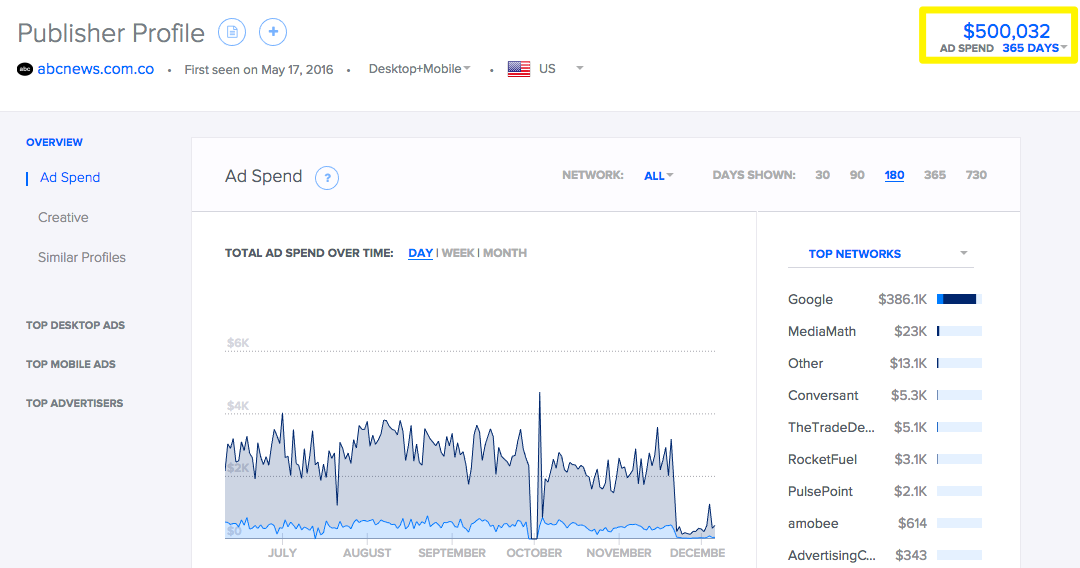
Of course, I’m not recommending that you post fake news.
I am, however, suggesting that you need to think long and hard about the angle of something before publishing it.
If you tap into the emotional triggers of your audience, you will almost always make your content get more attention in the long run.
Oh, and promoting it like crazy helps, too.
Conclusion
I hope this guide helped you realize that search engine optimization isn’t optional anymore.
While it doesn’t take a lot of effort to get a few basics right, it might kill your online presence if you don’t.
Don’t worry if you’ve already made some SEO decisions in the past that might not have been the perfect choices.
Just commit to getting started today as it can take you 6 months to a year to see results.
Do your keyword research before you write your next blog post. Then, use your keyword data to optimize the basics, such as your title tags and descriptions.
And who knows – maybe the next time you press publish, you’ll stand out.
After reading this guide, how will you change your attitude toward SEO?
What is SEO?
SEO stands for search engine optimization. Which is the art of ranking high on a search engine in the unpaid section, also known as the organic listings.
How long does it take for SEO to work?
If you are targeting competitive keywords, SEO can take upwards of 6 months to a year.
Does duplicate content hurt your SEO?
Search engines do not penalize for duplicate content.
What factors in link building matter?
Search engines look at the relevancy of the site linking to you, how well known is the linking site is, how many links you have in total, and the anchor text of each link.
Why SEO matters?
The vast majority of online experiences begin with a search engine, and nearly 75% of searchers start their searches on Google.
Comments (1164)